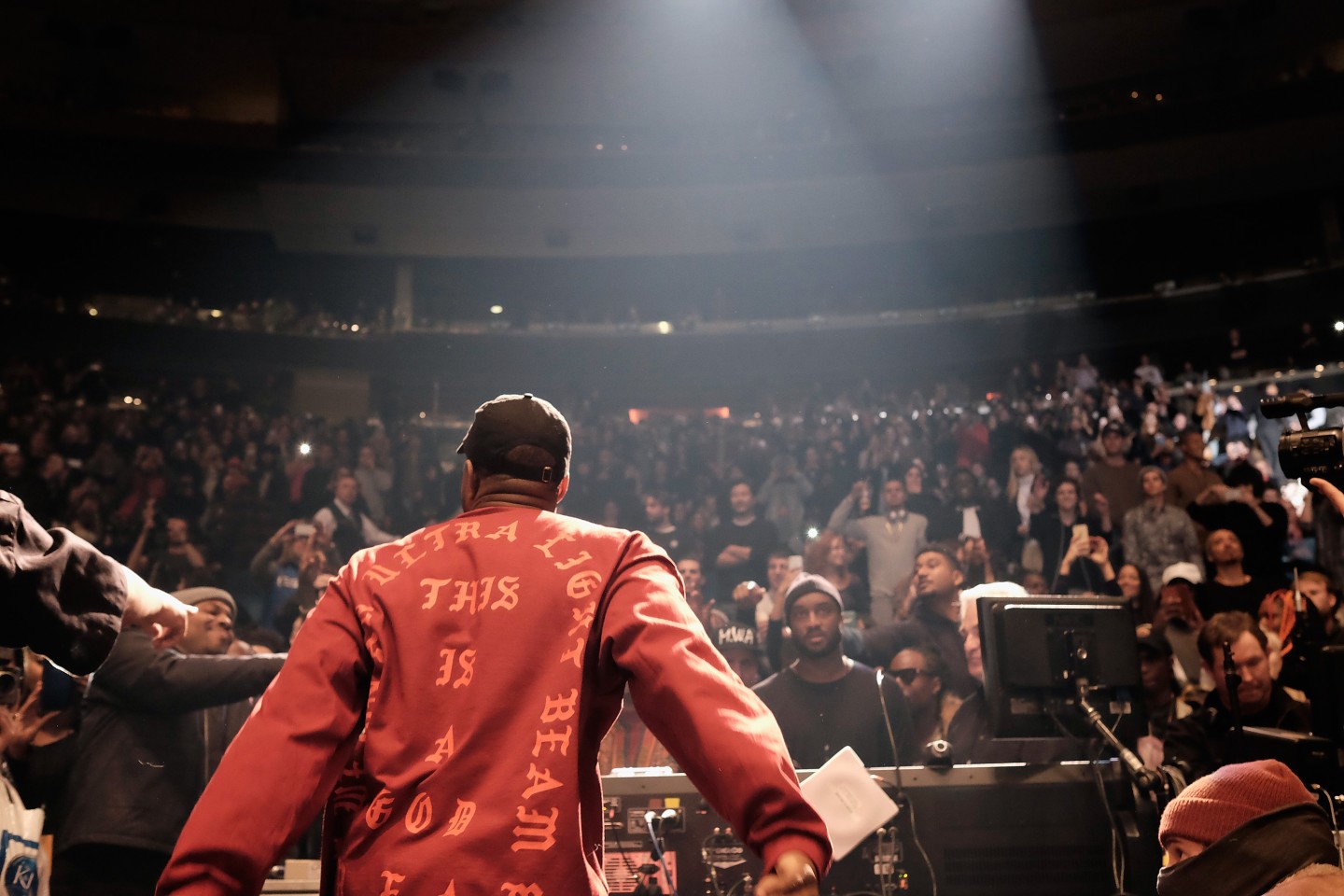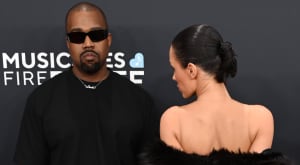 Dimitrios Kambouris / Getty Images
Dimitrios Kambouris / Getty Images
Every time I am able to accomplish something and create a reality from an imaginary principle—in other words, bring my imagination into the real world—I find that that’s something that verifies my faith.
—Maurice White
Many of us only believe in God when it’s convenient. It can be difficult enough to accept the existence of things we witness daily, let alone things we know we never will. I’ve long considered my own lack of faith a personal deficit and it has led me to a twin envy and admiration of people who can surrender to the unseeable—old ladies who stand guard outside storefront churches on Sunday afternoons; cousins who choose to honor their beliefs by wearing hijabs; Buddhist friends who find peace through a quiet higher power. To not treat the need for something bigger than you as though it’s a weakness seems, to me, like a strength in itself. Faith, as distinct from religion, is a beautiful and singularly human quality; I cannot fathom having the kind of confidence in the universe it requires.
It has been clear for some time that Kanye West has faith in droves; it has, alongside other characteristics of his, guided the great-grandson of ex-slaves in making it this far. In the 12 years that separate his first album, The College Dropout, from his latest, a lot has happened to both test and fortify Kanye’s faith. “Jesus Walks,” his first public declaration of existential conviction, bewildered audiences by making his most private conversations—with himself, with God—public. But the world into which he released his seventh album, The Life of Pablo, on Saturday night is markedly different from the one that first received him in 2004. He is different, too. Since we’ve known him, Kanye has lost a parent and gained a family. He has taken a couple of sneaker designs and turned them into bona fide fashion collections. He has launched a creative agency, invented a seven-screen cinema technology, learned a lot about lamps. He has recorded albums and gone on tour, given interviews, fought with paparazzi. He has beefed with two presidents and a pop star and, as of this writing, made peace with two of the three. He has tweeted, deleted, and tweeted again. He has changed his personal style, and ours. He has said a lot of dumb shit. He has made fans, lost fans, and alienated people. He’s only 38. Life is long, man. And sometimes it’s hard.
For TLOP’s opening five minutes and for the fiery, emotional tone they set, Kanye reached across epochs of contemporary black music to assemble an unlikely crew. With Kelly Price, The-Dream, Chance the Rapper, Kirk Franklin, Fonzworth Bentley, a gospel choir, and a viral preaching toddler supporting him, he floats through “Ultralight Beam.” It’s a slow march towards the song’s heavens-high conclusion, where he arrives at renewed faith, even if it doesn’t comes to him as readily as it did a decade ago; velvety croaks and bright horns, tempering the pace of the song’s verses and multiple hooks, mirror that journey. I'm tryna keep my faith/ But I'm looking for more/ Somewhere I can feel safe/ And end my holy war, sings The-Dream, the last word of each line punctuated by the swelling choir. Chance dazzles too, and Kanye’s collaborators lead him to the song’s final seconds, which sound like heaven should feel.
“Ultralight Beam” finds a thematic counterpart a few tracks later in “Low Lights,” a DJ Dodger Stadium-produced song built around a melancholy piano, a vibrant house sample, and an anonymous testimony of faith. I won't always be crying these tears. I won't always be feeling so blue. Some day, He will open up the door for me and call my name. Some day He will, a woman pleads. The not-subtle reminder to hold on to faith even when it feels insurmountable is appropriately sandwiched between the mania of the screeching “Feedback” and the muddy but triumphant Young Thug-assisted “Highlights.” Kanye’s voice does not appear on “Low Lights,” but I imagine it being among his favorites. There are other points across TLOP’s 17 tracks that feel similarly like levitation: when Kid Cudi appears on “Father Stretch My Hands Pt. 1,” when the Sister Nancy sample comes in behind Rihanna’s voice on “Famous,” when the Herculean bassline first rumbles on “Fade.” It feels good.
“From the outside looking in, things seem bad for him. And so they seem bad for us, because when we talk about Kanye, we’re talking as much about him and his work as we are about the people who stake their identities on loving or hating him.”
But there are also darker bits that have lent credence to claims about Kanye’s alleged mental health problems and substance abuse issues. Elsewhere, the bleak lyrics, unfinished verses, and raspy vocals might suggest turmoil; on a Kanye West project, they suggest confrontation. The middle of TLOP, where the sequencing feels discordant and anxiety-inducing, recalls his admission that the decision to start Yeezus with the aggressive “On Sight” was intended as a challenge to listeners. On “Freestyle 4,” a creepy violin-led song whose timbre and distorted vocals recall the out-of-mind vibe of DMX’s “Damien” and “The Omen,” Kanye is drunk and high at the same. He contemplates having sex at a Vogue party, but devotes more energy to the reactions that would follow than to the act itself. What if we just fucked at the Vogue party?/ Would we be the life of the whole party?/ Shut down the whole party/ Would everybody start fuckin'?, he wonders.
The song is followed by “I Love Kanye,” an a capella freestyle that serves both as a cheeky takedown of his vast fanbase and a confirmation that, for all of his ego, Kanye is thinking about how other people are thinking about him. Across TLOP, Kanye employs a double, triple, quadruple consciousness through which he deconstructs his personal life and his public persona. He considers what his mother thinks of him from heaven (too wild), how his family and friends interpret his behavior (too work-obsessed), how his fans justify his evolution (too difficult to love, too far removed from chopped-up soul samples), how he is treated by an unnamed but all-powerful “they” (too crazy).
After all, the party line on social media these days is that Kanye has finally lost it. He publicly defended documented rapist Bill Cosby. He tweets strings of exclamations, knowing it will confuse and excite his followers. He parades his ambitions with such little shame and with such faith in their eventuality that it reads as delusion. He speaks, as ever, in hyperbole. After years of being called “crazy” where “eccentric” would have sufficed, we wonder whether Kanye has at last been subsumed by his own internal chaos. From the outside looking in, things seem bad for him. And so they seem bad for us, because when we talk about Kanye, we’re talking as much about him and his work as we are about the people who stake their identities on loving or hating him.
The rollout of TLOP was marred by uncertainty, delays, and impulsive last-minute changes. Five days after it was expected, the album technically still isn’t out. The ordeal has been messy and annoying. But, as the hours pass, the chaos feels a little more controlled. Maybe TLOP’s release was an epically disorganized failure, but maybe it was also, to borrow a phrase of Kanye’s, a paradigm shift. Maybe future overlaps between fashion and music will be more intentional. Maybe albums will be released in beta and then patched up, tweaked via software updates like our favorite apps are. Kim Kardashian has lobbied Twitter to add an edit feature; maybe Kanye has convinced Tidal to do exactly that. Maybe my faith in him is misdirected. Maybe it’s wholly warranted. I can’t know until I see it.
